The Difference Between Schutzhund and KNPV Dogs
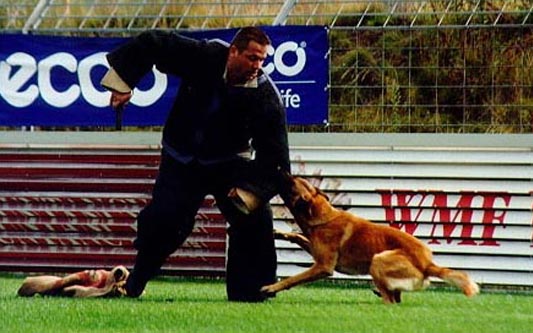
Schutzhund and KNPV are great European dog sports. Both started in the early 1900s. Schutzhund originated in Germany and the KNPV began in Holland.
Schutzhund was started by Amax Avon Stephanitz who is the founder of the German Shepherd breed. He designed the sport of Schutzhund to be used as a tool by breeders. Schutzhund is intended to give a breeder a way of measuring the working ability of a dog so that this information can be used in a breeding program. Schutzhund was originally intended as a certification program, which in effect it still is. But over the years it has evolved into a sport where competitors see who can do the best job in training their dogs in the skills that are tested.
The KNPV is also known as the Royal Dutch Police Dog Sport. The name would imply that the sport trains police dogs. This is not correct, the dogs trained in KNPV can not and should not go directly into police service work. The sport was originally designed to provide a certification program by the Dutch government for civilians to train and title dogs that would then be made available to the Dutch Police. The fact is that many people who train in the KNPV still feel that the purpose of the sport is to provide dogs for service work. Many of the exercises closely relate to skills that are needed as a service dog. The fact is that a KNPV titled dog still needs to go through 5 or 6 weeks of additional training to get it ready to work as a street police service dog. Over the years the KNPV has also developed into a dog sport more than a certification program in Holland.
Many dog vendors in this country intentionally mislead people and police agencies into believing that both Schutzhund and KNPV dogs are qualified to become police service dogs simply because they have obtained a Schutzhund or a KNPV title. Nothing is further from the truth. Both dog sports train a dog to bite a man. But it's possible to train dogs in either dog sport to bite strictly using the dog's prey drive. A dog must be able to work in his “defensive drive” and in “fight drive” to be a functional police service dog.
In Schutzhund, the dogs are trained to track. The style of tracking is called "competition foot step tracking." The purpose of Schutzhund tracking is not so much to teach a dog to follow a scent (that is a simple task) as it is to test the trainer's ability to train a dog to follow scent very precisely and at a very controlled speed. Yes, the dog must follow scent but the deciding factor in this work is not getting to the end of the track as much as it is the style in which the dog works (slow, methodical, not getting off the track more than a foot or two and not going by a corner by more than a body length). It is difficult to train a Schutzhund dog to track in such a way that the pressure needed to get the dog to slow down and conform to the rules does not bleed over into the obedience work. If it does, the pressure results in a dog that looks like it's depressed and hates the work. Training a good Schutzhund tracking dog is an “ART FORM.”
It is important to realize that Schutzhund tracking is nowhere near police service tracking. The fact is that if a dog was "FORCE TRACKED" for sport work (which is common), it will not do police service tracking. These force-tracked dogs do not like to track as a result of the force that was put on them in the force training. Service dogs need to be trained to track through drive, and tracking at speed is an important part of this training.
The KNPV does not have any tracking in their normal certification program (they do offer a special tracking certificate). One of the exercises in the KNPV is to do area searches in the woods for articles and for the helper. This is a particularly bad concept for a dog that is going to become a service dog. Dogs that are first trained to run around with their nose in the air trying to find the airborne scent from an article or a man can almost never be trained to become good tracking dogs where the scent comes from the ground. Tracking should always be trained before area search.
In Holland when police agencies purchase a KNPV titled dog the animal must first go through a selection test where its drives are tested for service work. Once an animal has been selected it then goes through 6 weeks of training before it is allowed to work on the street. In addition, the Dutch police recognize the scent restrictions of the sport and train special tracking dogs for their scent work. These specialty tracking dogs are almost exclusively not KNPV certificate dogs.
The protection work for Schutzhund has little to do with police service work. The Schutzhund bite work is a very precise routine that dogs can be "programmed" to work through. Granted, it takes a certain level of temperament and drive to be able to perform the routine. This drive level is so low on dogs that pass the Schutzhund exam that it almost eliminates the value of a title to a breeder like myself. Frankly through proper training dogs can easily be Schutzhund titled but these same dogs cannot come close to passing a selection test for police work, much less be trained to do the work.
When a dog is titled in Schutzhund, the judge gives his opinion on what type of "COURAGE" the dog has displayed that day. A "PRONOUNCED" rating is the highest. The problem is that 90% of the Schutzhund judges do not understand true aggression. They don't understand fight drive and they are not willing to admit it. Dogs are constantly given "pronounced" ratings when in fact they don't deserve it. This is evident by the number of Schutzhund-titled dogs that do not have the courage and hardness to do police service work. The problem is that the judges confuse "very active prey drive" in the bite work with true aggression.
The obedience in the Schutzhund sport is also very precise. Way more than is needed for a service dog. While there is nothing wrong with the challenge to train a dog to perform at this level of precision and still maintain a respectable drive, it is very difficult to do. In most cases, with novice trainers, dogs developed minor temperament problems. They lose overall drive because of inappropriate force being applied by new handlers. With the advent of better videos and books in this country, this is becoming less and less of a problem than it was 15 years ago.
While the KNPV sport does not require the same level of precision as Schutzhund, it does seem that a lot of Dutch trainers are very hard on their dogs in obedience. I think this is because they have not been forced to develop other training methods because many of their Malinois (at least the ones selected for their sport) are so high in drive that they can take the force and still maintain drive.
In KNPV, we also see a lot of dogs (even at the national level) who are strictly prey dogs. The sport has been gaining in popularity in this country because people have recognized the weaknesses of Schutzhund and are not willing to accept them. These people think that the KNPV is a much more difficult sport where only the tough survive. Unfortunately, they are wrong. The KNPV is a great sport if one keeps in mind that it is "JUST A SPORT."
I have seen a lot of KNPV dogs that are imported into this country that bite like alligators but have nerve problems. This makes them jumpy and a little dangerous to work with from a handler's standpoint. This is not something that is seen very often in German Shepherds but it is not that uncommon in Malinois. The Dutch should not be blamed for this. These dogs are almost always sold at reduced prices (many times they are 1/2 the price of a qualified dog.) The fact is the people who are to blame are the American importers who are trying to make a few extra dollars and accept lesser quality dogs.
The reason for getting into KNPV is there is no tracking and the exercises are fun to train (guard the article and handler protection etc.). Some people who live in cities have problems finding proper tracking grounds and some people simply hate training tracking (I find this hard to believe because it's my favorite thing to train). It's my personal feeling that KNPV would be the sport of choice in America today had it come to the States 25 years ago the way Schutzhund did.
I would recommend either Schutzhund or the KNPV to anyone interested in training working dogs. Both Schutzhund and KNPV have had a positive influence on breeding working dogs in this country. It's the influence of these dog sports that have raised the quality of police service dogs in America. I just feel that it is a mistake to think that all Schutzhund dogs and all KNPV dogs can become police service dogs. The facts are that very few of them have the drive or temperament for the work.
As far as I am concerned, the best patrol dog candidates are young males who have started their training in Schutzhund KNPV (at the bite development stage) but have not yet been titled. If adult titled dogs are purchased for service dogs, a good part of their training involves correcting problems caused by sport handlers and reprogramming the dogs to work on the street.




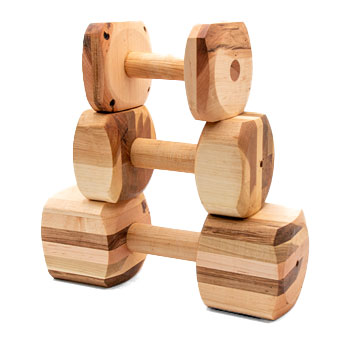
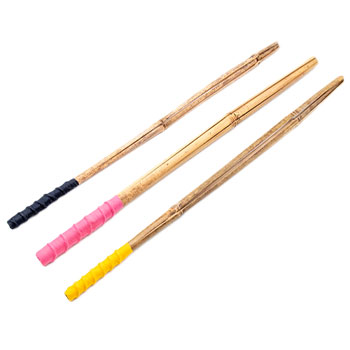
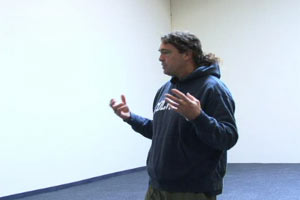
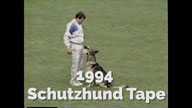

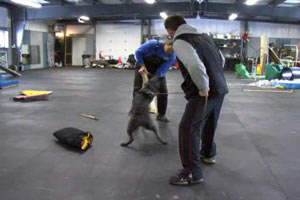
Ask Cindy.